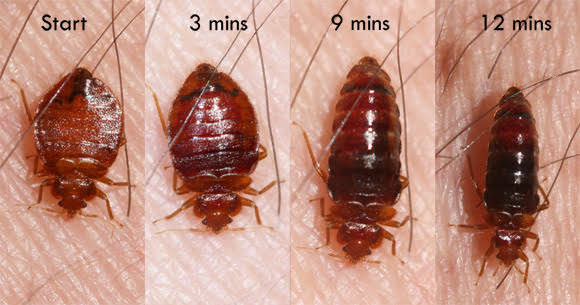 The increase in the number of people travelling abroad has also seen a rise in global bed bug infestations.
The increase in the number of people travelling abroad has also seen a rise in global bed bug infestations.
In Ireland, 2016 has seen an 80% increase in bed bug infestation compared to the same period in 2015.
Contrary to their name, bed bugs are not only found in beds. Easily transportable in clothing and baggage, these insects can thrive in just about any crack or crevice.
Rarely seen in the day, they hide their paper-thin bodies in all kinds of furniture.
Bed bugs aren’t life-threatening but they feed on human blood during the night, consuming four times their body weight in under 15 minutes.
Their saliva causes itchy, red spots that can be confused with mosquito bites. A key way to tell them apart is that bed-bug bites form a line, whereas mosquito bites are usually randomly spaced.
Antiseptic soap, calamine lotion or anaesthetic creams can help soothe itchiness and avoid infection.
Unlike mosquitoes, bed bugs do not carry or transmit any diseases.
When staying in a hotel, motel, or any other overnight accommodation whilst on holiday, inspecting the room for bed bugs can help ensure you don’t find yourself giving these biting insects a free ride back to your home.
So how can you tell whether your hotel room has been infested?
Bed bugs are oval, brown and around 4mm to 5mm long – about the size of a ladybird. But because they are nocturnal, you can’t usually see them during the day.
You need to check creases in mattresses, gaps under headboards, cracks in plaster or between timber floorboards, where they hide.
Apart from the bug itself, telltale signs of infestation include dark pellets of faeces, yellowing cast-off skins and a distinctively sweet, sickly smell which you may be able identify when you enter, in much the same way that you can smell if a room is damp.
If you are bitten and think you may have brought bugs home, throw away your suitcase without bringing it indoors and wash your clothes at 60C or higher, or have them dry-cleaned.
In your hotel
Check behind your headboards
Check the mattress for bed bug signs (small dark brown stains or spotting on bedding)
Remove the bedding and check the mattress itself
Check upholstered chairs, drawers, carpets, closets
Check all the nooks and crannies of your hotel room
Don’t leave your suitcase on the bed, floor, or chairs in hotels
Use luggage stands with caution. Luggage stands in hotel rooms are a hot spot for bed bug activity. Bed bugs often use luggage to travel and infest a new home, because of this luggage stands are often the first point of contact for bed bugs.
When staying in a hotel it’s a good idea to store your luggage in the bathroom whilst carrying out an inspection of a room, and during the whole stay. This can drastically reduce the risk of bringing bed bugs home with you.
At home
Wash your bed clothes on a temperature of at least 60℃, and if possible place the items into a tumble dryer for at least 30 minutes. Bed bugs aren’t great survivors in high temperatures. Washing clothing will help eliminate both adult bed bugs and bed bug eggs, reducing the risk of a bed bugs in your home
Inspect your luggage, clothes, beds and furniture for signs of infestation. And remember to check after visitors too.






